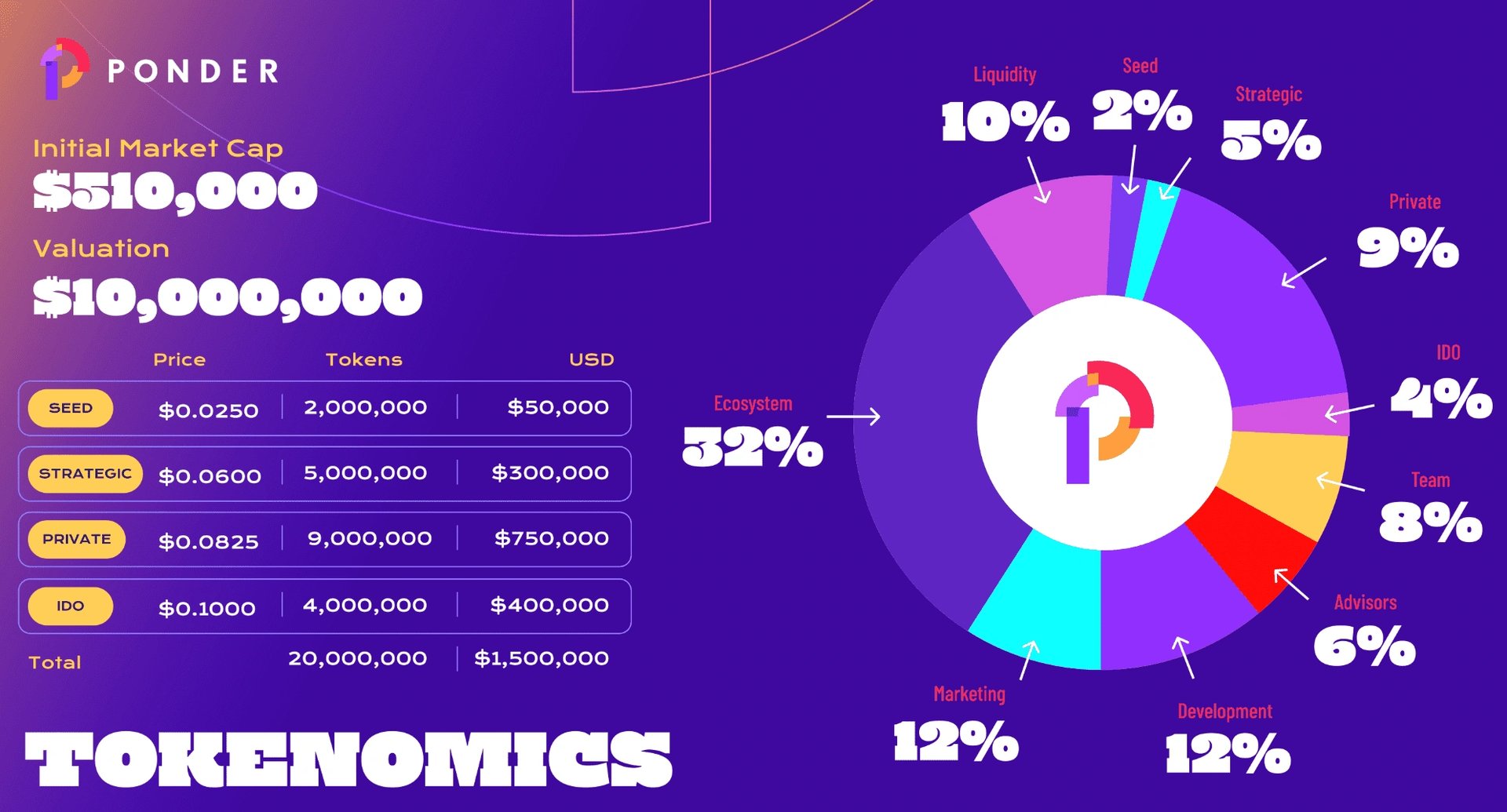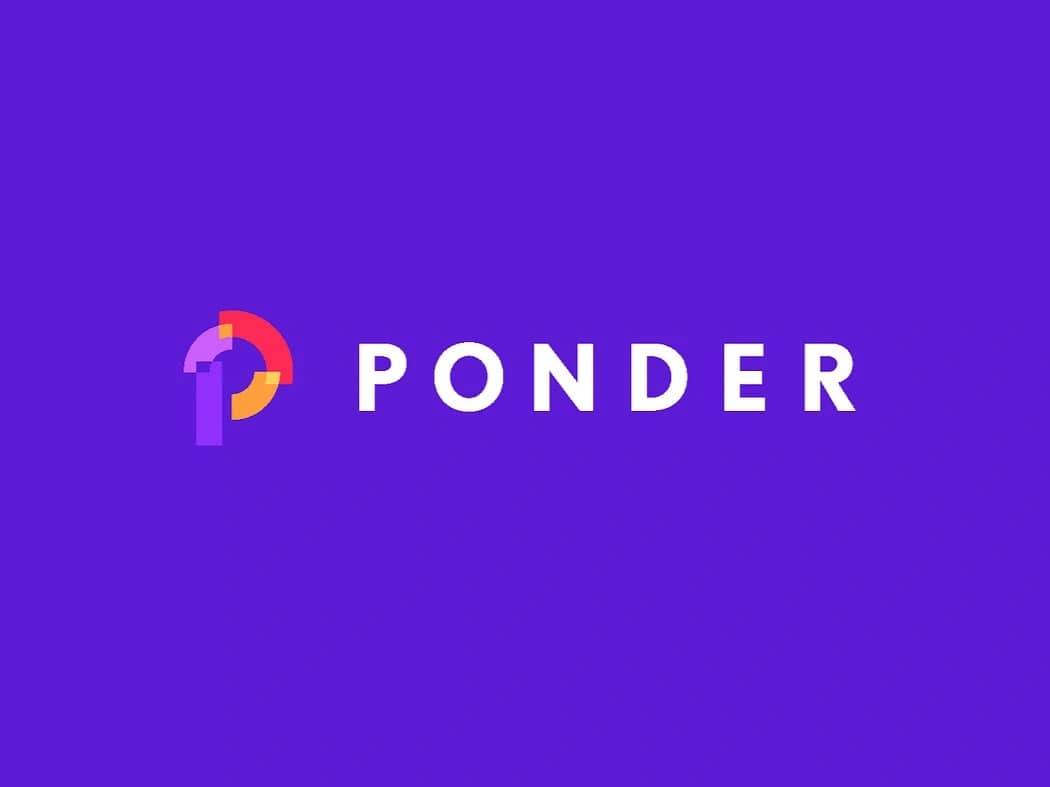订阅 wiki
Share wiki
Bookmark
Ponder
Ponder
Ponder 是一个 加密货币 比较工具,它聚合和分析了 Web3 的选项,包括桥接、借贷、质押、链上入口、链下出口、NFT 市场等等。它通过 智能合约 和 API 与各种平台集成,允许用户在一个界面内比较服务和执行交易。[1]
概述

Ponder 是一款旨在简化日益复杂的 Web3 生态系统的比较工具。随着 区块链 技术的扩展,用户在桥接提供商、DeFi 协议、NFT 市场和其他 去中心化应用程序 的导航方面面临挑战。Ponder 通过聚合和分析来自各种平台的数据,提供清晰的比较,以帮助用户做出明智的决策。其界面优先考虑易用性,允许用户与多个 Web3 服务进行交互,而无需手动搜索不同的平台。
Ponder 的灵感来自 Web2 比较工具,如 PriceGrabber 和 CompareTheMarket,它在 智能合约 和 API 级别与 区块链 基础设施集成,确保跨不同网络的无缝功能。此外,它还提供教育资源,以帮助用户更好地理解 Web3 机制,从而减少进入壁垒。
Ponder 采用模块化和可扩展的架构构建,旨在随着 Web3 的发展而保持适应性。其模块化方法通过允许更新特定组件而不中断系统来提高可维护性。它还通过为不同的用例实现轻松定制来增强灵活性。可扩展性是一项关键特性,可确保 Ponder 在交易量增加时保持其性能和可靠性。
通过支持互操作性和简化用户交互,Ponder 为更易于访问和高效的去中心化生态系统做出贡献。其目标是统一分散的 区块链 服务,使经验丰富的用户和新手都能更直观地进行 Web3 导航。 [2] [3] [4]
功能特性
Ponder Engine
Ponder Engine是连接和集成Ponder生态系统中各种提供商的核心框架。它通过与LayerZero和Socket.Tech等互操作性协议接口,促进跨多个平台的比较。该引擎专为可扩展性和适应性而设计,确保随着Web3领域的发展,可以无缝地集成新的和现有的提供商。[4]
作为统一层,该引擎通过直接的智能合约集成和互操作性协议连接到服务。这种结构能够对产品和服务进行广泛而灵活的比较,确保用户可以访问全面的实时数据以进行决策。[4]
Ponder Points
Ponder Points (PP) 是 Ponder 生态系统中的奖励货币,可用于兑换 Ponder 商店中的各种物品。用户可以通过平台互动赚取 PP,包括交易、交易量、质押和每日登录。未来还将推出额外的赚取机会,例如空投活动。PP 可用于购买数字和实物奖励,包括代币、硬件和独家商品。通过质押 $PNDR 获得资格的 Ponder Plus 会员将根据其会员等级获得奖励积分。Ponder 商店以轮换库存的方式运营,提供限时商品和独家优惠。[5]
生态系统
Ponder的生态系统分为多个阶段,每个阶段都旨在简化Web3和DeFi的各个方面。目标是通过降低复杂性并提供一个统一的平台来评估各种服务,从而增强用户体验。每个阶段都扩展了Ponder的功能,整合了该领域的新旧提供商。通过抽象技术细节和简化交互,Ponder旨在创建一个可访问且全面的解决方案,用于导航Web3。 [4]
第一阶段
Ponder生态系统的第一阶段侧重于桥接比较,使用户能够高效地评估和执行跨链传输。该平台与主要的、经过审计的流动性提供商,如AnySwap和Stargate,在智能合约层面集成,以提供原生支持。用户可以输入传输详细信息,Ponder将实时查询多个桥接提供商,以呈现关键数据,包括传输成本、桥接费用、交易时间、信任评分、路线概览和Ponder的费用。
Ponder使用户能够在自己的平台内直接执行资产转移,而不是将用户重定向到外部桥接界面。这种方法简化了流程,允许用户在单个工作流程中请求报价、比较选项和完成交易,而无需离开Ponder的界面。 [4] [6]
第二阶段
Ponder生态系统的第二阶段扩展了第一阶段的基础,引入了一个旨在促进跨链和互操作交易的交换聚合器。本阶段旨在通过整合多个区块链网络上的去中心化交易所(DEX)来提高流动性,首先从与EVM兼容的链开始。Ponder旨在通过聚合流动性并提供实时数据来优化交换率,减少滑点并提高交易效率。
Ponder引擎将直接与智能合约和API级别的交易所连接,利用LayerZero和Socket.Tech等互操作性协议。用户可以访问关键数据点,包括汇率、费用、滑点、MEV保护、通过ZK中继的私人交易选项、流动性可用性和风险评分。这种方法旨在提供无缝的交易体验,同时解决跨链的碎片化流动性问题。[4] [6]
第三阶段
Ponder生态系统的第三阶段整合了DeFi协议、质押和现实世界资产(RWA)市场,以简化用户获取收益生成机会的途径。此阶段使用户能够通过单一界面管理跨多个链的DeFi头寸,首先集成AAVE、Compound和Liquity等主要协议。鉴于DeFi的复杂性和快速发展,Ponder充当抽象层,简化了寻找、评估和进入以太坊质押、EigenLayer再质押、RWA借贷和DeFi货币市场等机会的过程。
Ponder自动化并整合复杂的DeFi交互,以最大限度地减少摩擦,掩盖抵押品管理、贷款发放、清算流程和信用评估等复杂性。用户无需浏览多个平台即可访问有关贷款池、清算风险和钱包健康因素的实时见解。第三阶段集中并以简化的格式呈现所有相关的链上数据,使个人和机构能够高效地做出明智的决策。[4] [6]
第四阶段
Ponder的第四阶段侧重于集成NFT市场、Ordinals和BRC-20代币,使用户能够高效地比较和交易数字资产。Ponder连接NFT市场API和智能合约,提供集合和单个NFT的实时报价。它还在其平台内直接促进交易。为了加强决策,Ponder整合了来自CryptoSlam、DeFiLlama、Dune、NFTBank.ai和hiro.so等分析平台的数据,提供对交易量、社交存在和市场趋势的洞察。
此阶段还引入了对Ordinals和BRC-20铭文的支持,使用户能够与基于比特币的数字文物和代币化资产进行交互。Ponder旨在建立一个复杂的比较和分析框架,帮助用户找到最佳市场价格。它为跨链NFT移动和与DeFi的更深入集成奠定了基础。随着DeFi平台探索使用NFT作为抵押品,Ponder弥合了这些生态系统之间的差距,为管理数字资产提供了统一的体验。[4] [6]
第五阶段
Ponder的第五阶段将引入对法定货币出入金通道、钱包、DeFi保险和去中心化物理基础设施网络(DePIN)的比较,使用户能够在数字金融的各个方面做出明智的决策。它将根据交易速度、成本和监管合规性评估法定货币的出入金通道,而钱包比较将侧重于安全功能、托管选项和账户抽象。DeFi保险集成将提供个性化的保险选项,以降低投资风险。此外,Ponder将分析DePIN解决方案,包括去中心化云服务、边缘计算和基于区块链的存储,根据成本、可扩展性和技术能力比较提供商。此阶段将简化决策过程,提供清晰的、数据驱动的见解,以帮助用户驾驭不断发展的Web3生态系统。[4] [6]
第六阶段
Ponder的第六阶段将专注于投资型DAO,这些DAO作为去中心化组织,管理用于各种资产投资的资金池,包括加密货币、NFT和现实世界资产。这些DAO在准入要求、费用和投资重点方面各不相同,这使得用户难以在其中进行导航。Ponder将通过在智能合约层面直接与DAO集成,简化研究、比较和进入流程,使用户能够以最小的摩擦投资和跟踪资金。此阶段将提供对DAO结构、费用和投资策略的更清晰的见解,帮助用户找到合适的机会,而无需浏览复杂的个人平台。 [4] [6]
治理
Ponder的治理模式要求代币持有者积极参与。要获得治理奖励,代币持有者每月必须至少对一项提案进行投票。否则,没收的奖励将重新分配给国库,并在活跃参与者之间重新分配。与其他允许委托的治理模式不同,Ponder强制直接参与,确保所有代币持有者都为决策做出贡献,而不是被动地进行质押。这种结构旨在维持一个积极参与且负责任的社区,引导平台的发展以使所有参与者受益。 [4]
$PNDR

PNDR的总供应量为1亿,分配如下: [4]
- 生态系统: 32%
- 市场营销: 12%
- 开发: 12%
- 流动性: 10%
- 私募: 9%
- 团队: 8%
- 顾问: 6%
- 战略: 5%
- IDO: 4%
- 种子轮: 2%
合作关系
- Socket
- Avalanche
- Quickswap
- Native
- Nuklai
- Connext
- Li.Fi
- Linea
- Swing
- Kyber
- OpenOcean
- ODOS
- Celer
- Ape Terminal
- Movement Labs
- CoinRank
- Fizen
发现错误了吗?
